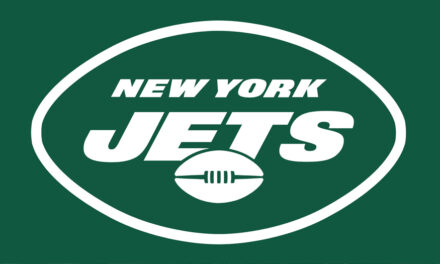
As you may have heard this summer, the Summer Olympics in Rio is fully immersed on controversy. It is clear that the city is not fully ready for the Games to begin. They will go on of course. But promises made by the city and the country have been broken and some venues will leave alot to be desired.
The promises made to the International Olympic Committee also came with a huge check. And that is part of the controversy. Charges that the IOC sold out to the highest bidder knowing that it was unlikely Rio would be ready.
So where does all that Olympic money go?
Lets start at the top. The IOC is a nonprofit run by a “volunteer” president who gets an annual “allowance” of $251,000 and lives rent-free in a five-star hotel and spa in Switzerland. Next up are the IOC members who travel first-class and get paid thousands of dollars just to attend the Olympics, beneath the executives who make hundreds of thousands to organize the Games, beneath the international sports federations, the national sport federations and the national Olympic committees and all of their employees.
Last up are the actual athletes. The stars of the show that we will start watching on Friday.
Oh, I almost forgot the broadcast and sponsorship deals for the Games that deliver billions to the IOC and its affiliates every Olympic season.
Okay, back to the athletes. By the time that flood of cash flows through the Movement and reaches the athletes, barely a trickle remains. Conservative numbers are around a few thousand dollars at most. I read where the biggest tangible reward the USA athletes will receive for making it to Rio will be two suitcases full of free Nike and Ralph Lauren clothing they are required to wear at all team events.
Let me focus in on Cyrus Hostetler, a Team USA javelin thrower and two-time Olympian. He recently was quoted as saying the most he’s ever made in one year in his career, after expenses, is about $3,000.
Then there is Ronda Rousey. She won a bronze medal in judo at the 2008 Olympics and was living out of her car two years later. Speedskater Emily Scott needed food stamps to get by as she trained for the 2014 Winter Games.
 Basically, the Olympics are a multibillion-dollar entertainment industry whose entertainers are, at least in the USA, often expected to raise their own income or live in poverty. There is no comprehensive data on U.S. Olympic athlete pay, but information collected by a nonprofit last year from 150 track and field athletes ranked in the top 10 in the country in their events found an average income of $16,553. Even USOC officials concede that, with the exceptions of the handful of mega stars such as Michael Phelps and Ryan Lochte who rake in big endorsement money and those who play sports with lucrative professional leagues, most U.S. Olympic athletes cannot earn enough from their sports to make a living.
Basically, the Olympics are a multibillion-dollar entertainment industry whose entertainers are, at least in the USA, often expected to raise their own income or live in poverty. There is no comprehensive data on U.S. Olympic athlete pay, but information collected by a nonprofit last year from 150 track and field athletes ranked in the top 10 in the country in their events found an average income of $16,553. Even USOC officials concede that, with the exceptions of the handful of mega stars such as Michael Phelps and Ryan Lochte who rake in big endorsement money and those who play sports with lucrative professional leagues, most U.S. Olympic athletes cannot earn enough from their sports to make a living.
While many athletes struggle to pay their rent or buy groceries, the billions the Rio Games will generate will flow into the paychecks and extravagant perks enjoyed by IOC members, USOC staffers, and employees and volunteers with the hundreds of sports organizations.
USA Swimming Executive Director Chuck Wielgus makes $854,000, and national swim team director Frank Busch makes $346,000; their swimmers competing in Rio next month can make monthly stipends that cap at $42,000 per year. USA Triathlon CEO Rob Urbach makes $362,000 while Team USA triathletes compete for stipends that range from about $20,000 to $40,000 a year. The coach of the USA Rowing women’s team makes $237,000 while his rowers vie for stipends that max out at about $20,000 per year.
USOC CEO Scott Blackmun, who makes about $1 million a year defends the system. He points out that the Olympic Movement is an amateur based movement.
It may be an amateur based movement but IOC members are being treated as professional travelers. When on IOC business, members fly first-class, stay in luxury hotels, and also get cash per diems: $450 per day for regular IOC members, $900 per day for the IOC’s executive committee. I can just picture them scheduling meetings all over the world so they can enjoy their perks.
These numbers also apply to the Games themselves, which means in Rio, some IOC members will get paid more to watch the Olympics ($7,650, depending on travel schedules) than many Team USA athletes will get paid to compete in the Olympics.
How about this story. Bob Balk is a former Paralympic canoe athlete who attended the 2012 London Games as an IOC volunteer. This got him per diem money. In a recent phone interview, he recalled his amazement when he learned how much money he and other volunteers were getting to attend the Olympics.
Balk, like other IOC members and volunteers, had his flight and hotel bills covered, a car service to get around London, and many free meals. When Balk got home, he still had $10,000 in per diem cash, he said, which he just deposited in the bank.
In major American sports leagues, such as the NFL, Major League Baseball and the NBA, management typically shares about 50 percent of the revenue with the athletes. A 2012 study by former athletes found that just 6 percent of USOC spending actually goes to athletes as cash payments.
Ben Barger, an Olympic sailor, led the study. He summarized the study by pointing out that the money goes to executives first, then administrators, then coaches, and then athletes.
Since 2009, tax records show, the USOC’s payroll has expanded from $39 milllion to $49 million, and the number of USOC employees making $100,000 or more has nearly doubled, rising from 66 to 121. While USOC employees’ paychecks have grown over the years, the bonuses the USOC pays to Olympic medalists through a program called “Operation Gold” have remained stagnant since 2002: $25,000 for gold, $15,000 for silver, and $10,000 for bronze.
USOC chief of sport performance Alan Ashley, makes about $460,000. He hires someone like USA Track and Field Director of Sport Performance Peter “Duffy” Mahoney and pays him $152,000 a year.
Remember I spoke of Cyrus Hostetler, the javelin thrower earlier. He decided to train to return to the Rio Games and made the team. Mahoney, not that long ago, told Hostetler in an email that, after consulting with USOC staff, he had decided “you do not exhibit sufficient finalist or medalist potential.” Hostetler, 29, was living in a dormitory-style room at the USOC training center in California at the time, training every day with other javelin throwers.
Mahoney informed Hostetler that USA Track and Field was cancelling funding for his bed, food and treatment at the center. If Hostetler wanted to stay, he’d have to pay: $200 a month to train, $10 per meal, $43 per hour for massage therapy, and $100 per hour for medical treatment.
Then there is the US Rowing teams. At US Rowing, based in Princeton, N.J., women’s head coach Tom Terhaar has major input on who makes the Olympic team and how much they get paid. Terhaar is US Rowing’s highest-paid employee, at $237,000. Men’s coach Luke McGee makes $197,000. Their rowers compete for stipends that range from $500 to $1,700 per month.
Glenn Merry, the US Rowing CEO, said concerns about athlete pay “keep him up at night,” but he defended the disparity between what he pays his coaches and his rowers as the best use of limited resources to try to win the most medals possible.
It is quite clear his thinking prevails throughout the Olympic Movement. He said the following.
“Athlete support is super-important, but the quality of coaches, without that, there are no medals,” Merry said. “What a coach does is not the same as an athlete. It’s not apples to apples. An athlete is pursuing a dream.”
And administrators like Merry are seeking money. They are cashing in on the athletes you will be watching this summer.
Photo: Glenn Merry, US Rowing CEO








